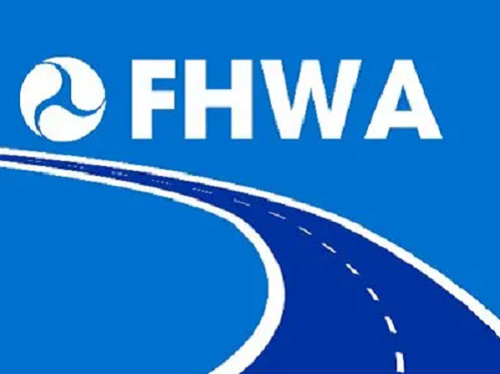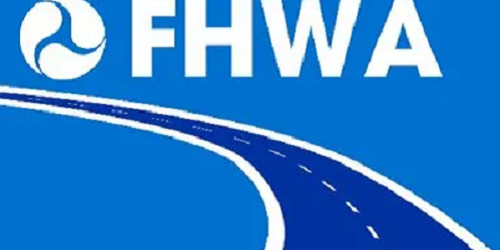The Federal Highway Administration recently issued a finalized performance measurement rule to provide state departments of transportation and Metropolitan Planning Organizations with a “national framework” for tracking transportation-related greenhouse gas emissions GHGs, along with the requirement to set their own targets for GHG reduction.
[Above image by FHWA]
Entitled “National Performance Management Measures; Assessing Performance of the National Highway System, Greenhouse Gas Emissions Measure,” FHWA’s final GHG performance rule – located in the Federal Register under docket number FHWA-2021-0004 – largely retains what the agency issued in its notice of proposed rulemaking in July 2022, which required state DOTs and MPOs to establish declining carbon dioxide (CO2) targets for the GHG measure on the 223,668-mile National Highway System (NHS) and report on progress toward the achievement of those targets.
The final rule defines the GHG measure to be the percent change in on-road tailpipe CO2 emissions on the NHS, relative to the reference year of 2022 instead of 2021 – a recommendation the American Association of State Highway and Transportation Officials submitted to FHWA in its commentary on the GHG performance measure.
As a result, state DOTs must establish targets no later than February 1, 2024, with MPOs required to establish targets no later than 180 days after the state DOT.
FHWA Administrator Shailen Bhatt emphasized that this new tool will play a key role in the Biden administration’s effort to cut U.S. carbon pollution in half by 2030.
“Transportation is the leading source of greenhouse gas emissions in the U.S. and reducing emissions from that sector while ensuring our economy works for everyday Americans is critical to addressing the climate crisis,” he noted in a statement. “We don’t expect state DOTs and MPOs to solve a problem this large on their own, which is why this performance measure does not impose penalties for those who miss their targets.”
AASHTO noted in its commentary on the proposed rule that state DOTs “recognize the urgency and need to address and mitigate climate change given its harmful impacts to both the natural and built environment” and thus “strongly support” FHWA’s overall goal and intent of reducing GHGs.
AASHTO further noted that, regardless of FHWA’s GHG measure, all state DOTs are “addressing extreme weather impacts” as part of their transportation asset management plans which serve to guide their investment decisions.
“In addition, many states are developing resilience improvement plans to holistically understand how they can make the transportation infrastructure more resilient to withstand the effects of extreme weather and climate change,” the organization added.
That being said, AASHTO also noted that not all state DOTs have the same ability to directly affect the reduction in GHG emissions, nor do they have control over certain strategies and tactics that may look promising for reducing GHG emissions.
“These strategies and actions will vary by state and, like other state and federal transportation goals, require different approaches appropriate to the specific state context,” the organization noted.
In addition, AASHTO had expressed in its 2022 comments that it does not agree FHWA was provided the necessary legal authority by Congress to establish this particular performance measure, as the approach to establishing the GHG rule could lead to the establishment of new and additional performance measures without explicit Congressional authorization in the future.
Beyond the development of FHWA’s regulation, several states have been engaging in their own carbon-reduction efforts.
For example, in August 2021, the Colorado Transportation Commission proposed new transportation pollution reduction planning standards on August 16 that seek to cut greenhouse gas or GHG emissions from the state’s transportation sector while improving statewide air quality and reducing smog.
Known as the “Greenhouse Gas Pollution Reduction Planning Standard,” that rule aims to “shape” how state and local governments plan projects to ensure future transportation infrastructure supports cleaner air and fights climate change, all while providing more “travel options” to Colorado residents.
As part of that effort, the Colorado Department of Transportation, the Colorado Energy Office, and the Colorado Department of Public Health & Environment developed a “Clean Truck Strategy” in March 2022 that seeks to lower greenhouse gas or GHG emissions from heavy- and medium-duty vehicles by at least 45 percent statewide by 2050.
Meanwhile, the Indiana Department of Transportation issued a Carbon Reduction Strategy document in December 2022. That plan recognizes that, while expected economic growth and heavy freight activity across the state are just some of the headwinds the agency will face in achieving its CO2 reduction objectives, technological advances and deepening partnerships with MPOs, logistics industry, transit agencies and other key stakeholders should help cut GHG emissions across Indiana’s transportation system.


